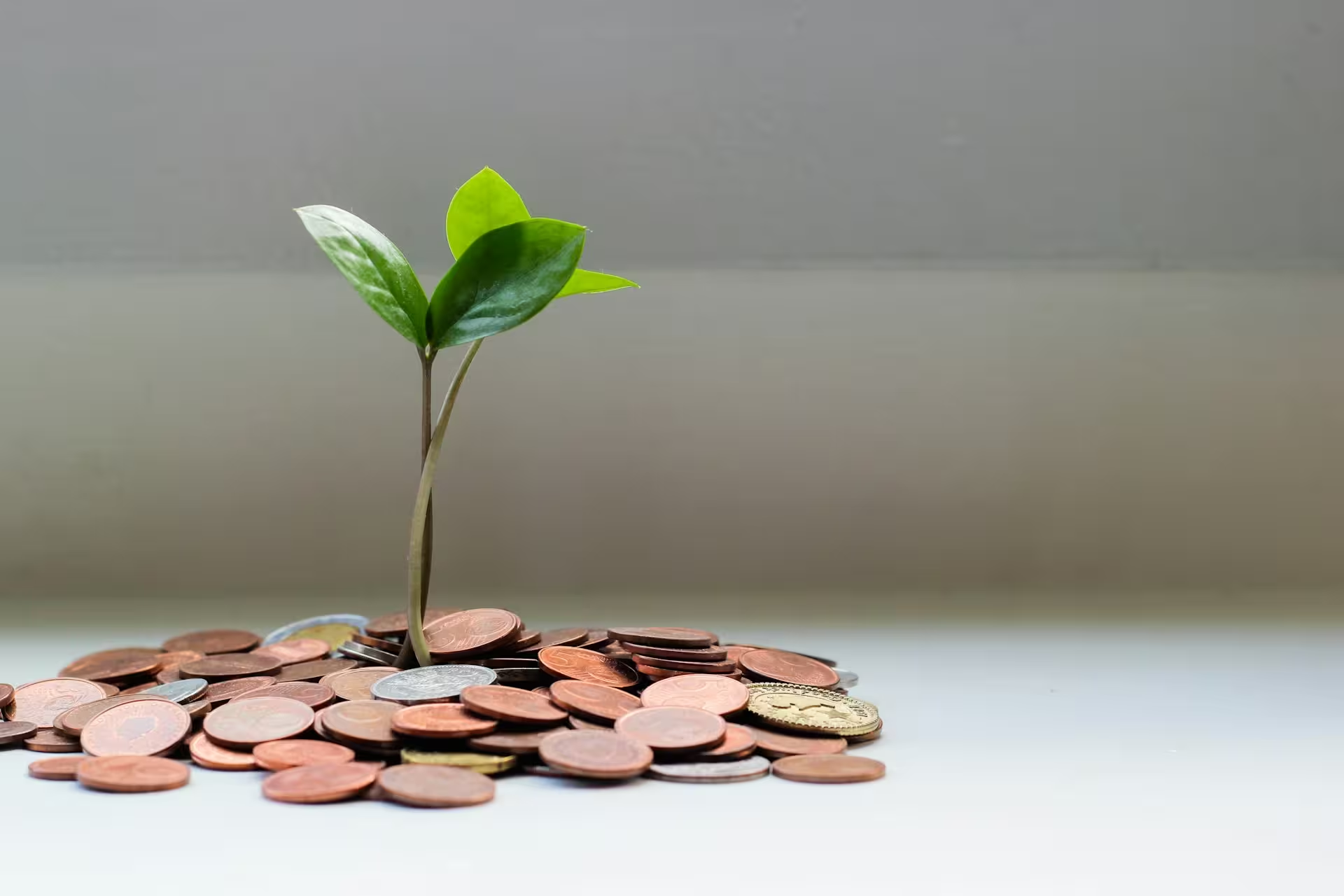Directing investments towards sustainable projects, contributing to the ecological transition, making placements that finance environmentally beneficial initiatives—these are all objectives of ecological investment funds. And this is achieved without ever abandoning the pursuit of profitability; quite the contrary, in fact. In short, investing in ecological funds means choosing a financial approach that places profitability, sustainability, and responsibility on equal footing. The range of green investment vehicles is also broad, offering prime opportunities for individuals who want to invest for the planet.
Ecological Investment Funds: Investments for the Energy Transition
Ecological investment funds—or green funds—are a category of vehicles that group together investments selected for their positive impact on the environment. These can be projects related to renewable energy development, energy efficiency, waste management, bio-waste recycling, soft mobility, low-carbon renovation, or even soil decontamination. The scope of action is vast, and the needs are numerous.
The most common ecological investment fund is a UCITS (Undertaking for Collective Investment in Transferable Securities) with an ISR (Socially Responsible Investment) label. This type of fund pools the savings of several investors to place them on the financial markets.
There are several types:
- Equity funds: Invested in company shares, selected for their ESG (Environmental, Social, and Governance) approach.
- Bond funds: Invested in bonds.
- Diversified funds: Combine equities, bonds, and other assets.
By integrating ESG criteria into the selection of underlying assets, this type of ecological fund contributes to the ecological transition and can achieve significant returns. Players like Mirova Global and Mandarine Gestion are among those offering investment in ESG-labeled UCITS.
Another essential ecological investment product is the LDDS (Livret de développement durable et solidaire - Sustainable and Solidarity Development Passbook). This bank savings account is dedicated to financing social and environmental activities, such as loans for financing energy renovation work on homes and financing social housing in France. However, be aware that LDDS returns are not as high as those of other vehicles. But the capital is guaranteed, and another advantage is that the environmental actions are tangible.
Green Funds: A Myriad of Possibilities!
Investing in ecological funds means embarking on a journey: one of environmental protection and support for the ecological transition. Investors who join this movement, in turn, benefit from a multitude of attractive and profitable investment vehicles.
Green Bonds
Green bonds are debt securities issued to finance environmental projects: energy renovation, waste treatment, sustainable infrastructure, green mobility, etc. Their truly green and sustainable nature is guaranteed by labels (ISR, Greenfin).
Green ETFs
Green ETFs (Exchange Traded Funds) are index funds listed on the stock exchange that replicate the performance of an index composed of a panel of companies committed to the ecological transition. Unlike traditional funds, green ETFs incorporate strict ESG criteria and exclude polluting sectors (coal, oil, armaments, etc.). Lyxor MSCI Green Leaders ETF, iShares Global Clean Energy ETF, and Amundi MSCI Europe ESG Leaders are among the best-known green ETFs.
These products can also be integrated into vehicles such as the PEA (Equity Savings Plan), PER (Retirement Savings Plan), or life insurance.
ISR Life Insurance
ISR life insurance functions like classic life insurance, but the proposed funds adhere to ESG criteria. Savers can invest in unit-linked funds labeled ISR, Greenfin, or Finansol, or in ISR euro-denominated funds (which are rarer).
The PEA and PER Go Green
The PEA (Plan d'épargne en actions - Equity Savings Plan), now welcoming ESG ETFs, allows savers to invest in European companies whose offerings are oriented towards products or services that serve the ecological transition and environmental protection.
The PER (Plan Épargne Retraite - Retirement Savings Plan) can also adopt an ecological approach. More and more providers are offering investors a PER that directs funds towards projects related to sustainable agriculture, renewable energies, or solidarity finance, among others.
Green FCPR
FCPRs (Fonds Communs de Placement à Risques - Common Funds for Risk Capital) are a category of ecological funds whose purpose is to finance environmental and ecological projects through equity stakes in startups, mid-caps, and SMEs.
Biofuels, renewable energy, energy storage, decontamination, green engineering... an ecologically focused FCPR directs investments towards such sectors. While the risk of capital loss is real, the FCPR offers high return potential in return.
To invest in an FCPR, several options are available to an investor:
- Through specialized private equity platforms
- Through a wealth management advisor
- As part of a life insurance contract or a PER
Sustainable Real Estate Crowdfunding
Sustainable real estate crowdfunding, meanwhile, offers a direct link between investors and eco-responsible project holders (low-carbon buildings, passive residences, green rehabilitations). Platforms like Lita.co or Enerfip have established themselves in this sector.
Homaio: Democratizing the Carbon Quota Market
Homaio perfectly illustrates this new impact investing dynamic. By making the carbon quota market (EU ETS) accessible to individuals, it allows anyone to withdraw CO² emission allowances from the market. Concretely, investors finance a portfolio of emissions to prevent their exploitation by the most polluting companies.
What are the Advantages of Ecological Investment?
Investing in ecological investment funds means acting for the environment, investing for a sustainable future and for future generations. But it also means taking a position in structurally growing markets.
The Strong Financial Performance of Green Funds
Far from being anecdotal, the performance of ecological investments is tangible for an investor. Some products even show superior returns. This is particularly the case for ESG ETFs, which, among major players in the sector, have consistently outperformed standard ETFs over the past 5 years.
Here is a selection of funds recognized for both their environmental commitment and their financial performance:
- Schroder ISF Global Climate Change Equity
- Vontobel Fund – Global Environmental Change
- Pictet – Global Environmental Opportunities
- Nordea 1 – Global Climate and Environment Fund
Other Benefits of Ecological Investment
Investing ecologically not only helps grow your money but is also a beneficial choice for the future. Here's why:
- A diversified investment portfolio: By focusing on future sectors such as renewable energies, clean technologies, or sustainable infrastructure, investors can diversify their investments and benefit from rapidly growing markets.
- Reduced long-term risks: Polluting companies are increasingly constrained by strict regulations. By choosing sustainable investments, these risks are avoided, and investments are directed towards companies better prepared for the future.
- Concrete impact: Thanks to monitoring tools (reports, ESG indicators, carbon footprint, etc.), it is possible to measure the positive effects of one's investment on the environment and society. You know where your money goes—and what it's used for.
Keys to Choosing a Good Ecological Fund
Choosing a good ecological investment fund requires an analysis based on several criteria. The first concerns the real integration of ESG (Environmental, Social, Governance) criteria into the management strategy: extra-financial analysis must be serious, transparent, and documented. Next, the presence of a recognized label, such as ISR or Greenfin, is a quality indicator that attests to a real commitment to the ecological transition.
It is also essential to examine the portfolio's composition: the sectors financed (renewable energies, waste management, energy efficiency, biodiversity, etc.), geographical areas, and the performance of the selected companies. Historical performance, risk level, and management fees also come into play. A good ecological fund thus combines sustainable return, environmental coherence, and transparency in management.
As for the labels, those that help guide investments are:
- The ISR label (socially responsible investment), created by the Ministry of Economy and Finance to label investment funds that comply with ESG criteria.
- The Greenfin label, which focuses on ecological investments.
- The Finansol label for solidarity finance.
- Finally, Article 9 of the SFDR (Sustainable Finance Disclosure Regulation) indicates that the fund has a sustainable objective.
Summary of Ecological Investment Fund Opportunities
| Nom |
Type de support |
Performance |
Labels / ESG |
Avantages |
Risques / Inconvénients |
| Schroder ISF Global Climate Change Equity |
Fonds actions international |
Bonne performance |
ESG / ISR probable |
Exposition mondiale, focus transition climatique |
Risques inhérents aux actions |
| Vontobel Fund – Global Environmental Change |
Fonds actions international |
Bonne performance |
ESG |
Diversification thématique, forte expertise en durabilité |
Risques marché, volatilité possible |
| Pictet – Global Environmental Opportunities |
Fonds actions thématique environnement |
Bonne performance sur plusieurs années |
ESG / ISR probable |
Portefeuille axé sur biodiversité, eau, énergie, etc. |
Risques de marché |
| Nordea 1 – Global Climate and Environment Fund |
Fonds actions durables |
Performances compétitives |
ISR / ESG |
Présence forte sur les thématiques environnementales |
Risques sectoriels |
| Lyxor MSCI Green Leaders ETF |
ETF vert |
Bonne performance (supérieure aux ETF standards) |
ESG / ISR |
Réplication indice écoresponsable, frais faibles |
Risque de marché |
| iShares Global Clean Energy ETF |
ETF vert |
Surperformance vs ETF standard |
ESG / Greenfin probable |
Accès aux leaders mondiaux des énergies propres |
Exposition au risque sectoriel élevé |
| Amundi MSCI Europe ESG Leaders |
ETF ESG européen |
Performance solide |
ESG / ISR |
Spécialisé Europe, approche ESG rigoureuse |
Risques de fluctuation des marchés |
| LDDS (Livret Développement Durable et Solidaire) |
Livret réglementé bancaire |
Faible rendement net |
Éthique (pas ESG au sens strict) |
Capital garanti, sans frais, finance logement social et rénovations |
Rendement faible |
| Assurance-vie ISR (multisupport) |
Assurance-vie (UC labellisées ISR) |
Variable selon les fonds choisis |
ISR / Greenfin / Finansol |
Fiscalité avantageuse, souplesse, choix de profils verts |
Risques selon UC / fonds sélectionnés |
| PEA ESG |
Plan d’épargne en actions labellisées ESG |
Performances ESG en croissance |
ISR / ESG |
Fiscalité avantageuse, diversification du portefeuille |
Risques actions |
| FCPR vert |
Fonds commun de placement à risques labellisé ISR / ESG |
Haut potentiel de rendement |
ISR possible / non systématique |
Financement direct PME/startups vertes, secteurs innovants |
Risque de perte en capital |
| Green Bonds (obligations vertes) |
Obligation |
Rémunération dépend de l’émetteur |
ISR / Greenfin |
Financement projets ciblés (mobilité verte, rénovation, etc.), sécurité si émetteur solide |
Risques de taux |
| Crowdfunding immobilier durable (Lita.co, Enerfip) |
Financement participatif immobilier vert |
Rendement variable selon projet (jusqu'à 7–10%) |
ESG / Plateformes labellisées |
Impact direct, accès dès quelques centaines d’euros |
Risque sur la rentabilité projet |
| Homaio (marché des quotas carbone) |
Marché des quotas carbone (EU ETS) |
Croissance moyenne de 25% par an sur les 10 dernières années |
Impact environnemental |
Retrait effectif de droits à polluer du marché, concept original |
Risque de perte partielle ou totale de capital |
Ecological investment is no longer a marginal or activist choice; it has now become a strategic pillar of contemporary finance, driven by the climate emergency, the imperatives of transforming economic models, and increasing societal pressure.
Labeled funds, green bonds, ESG ETFs, and even crowdfunding: sustainable solutions are diversifying, becoming more accessible, and in some cases, offering entirely competitive return prospects.
Engaging in ecological funds means investing with conviction: growing your capital while supporting a sustainable economy based on innovation, resilience, and responsibility.




.avif)
